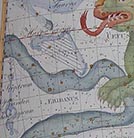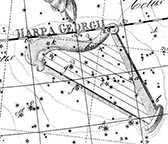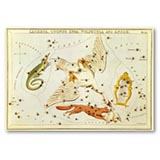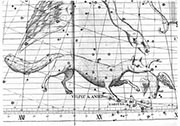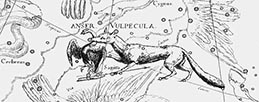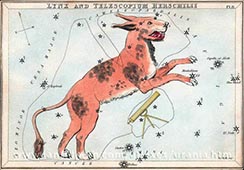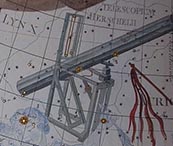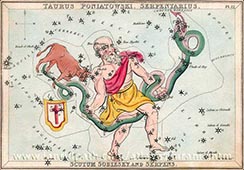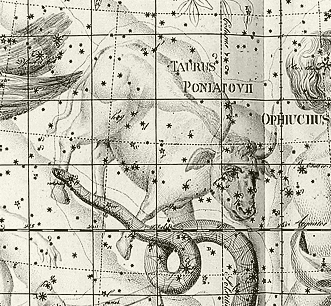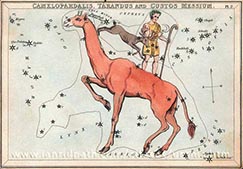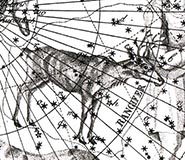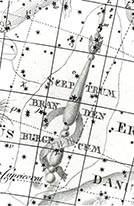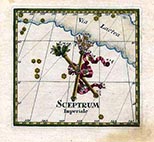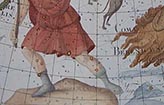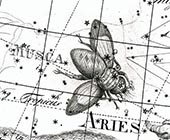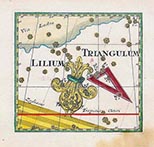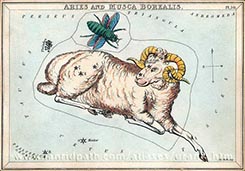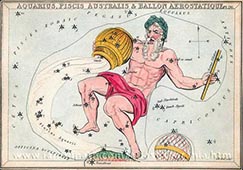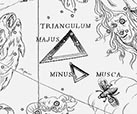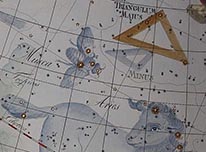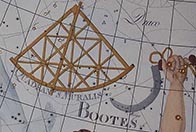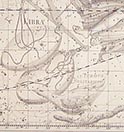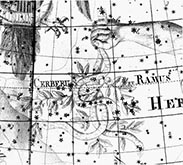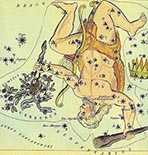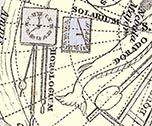-
Αναρτήσεις
1113 -
Εντάχθηκε
-
Τελευταία επίσκεψη
Τύπος περιεχομένου
Forum
Λήψεις
Ιστολόγια
Αστροημερολόγιο
Άρθρα
Αστροφωτογραφίες
Store
Αγγελίες
Όλα αναρτήθηκαν από Κατερινα
-

Εξόρμηση Κιθαιρώνα !!!
Κατερινα απάντησε στην συζήτηση του/της themis_kart σε Εξορμήσεις και τόποι παρατήρησης
Δεν έχω πάει τελευταία για να ξέρω ακριβώς που είναι οι ανεμογεννήτριες, αλλά είμαι σχεδόν σίγουρη πως δεν υπάρχει καμμία σχέση με το χωράφι. Πρέπει να είναι πιο ψηλά στο βουνό. -

Εξόρμηση Κιθαιρώνα !!!
Κατερινα απάντησε στην συζήτηση του/της themis_kart σε Εξορμήσεις και τόποι παρατήρησης
Ο χώρος παρατήρησης είναι ιδιωτικός. Ανήκει σε έναν καλό άνθρωπο που μας αφήνει να παρατηρούμε όποτε θέλουμε. Η μπάρα που λένε τα παιδιά, βρίσκεται εκτός του χωραφιού, πάνω στον κεντρικό ασφαλτόδρομο που οδηγεί στις κεραίες. Τους καλοκαιρινούς μήνες, -κάποιες φορές- η μπάρα κατεβαίνει από την Πυροσβεστική, ως μέτρο προφύλαξης για εμπρησμό. Όπως στην Πάρνηθα. -

Εξόρμηση Κιθαιρώνα !!!
Κατερινα απάντησε στην συζήτηση του/της themis_kart σε Εξορμήσεις και τόποι παρατήρησης
Ωχ ωχ ωχ! Ποιος τον ακούει τώρα... Σκέφτομαι να χαθώ για κάποιο διάστημα για κάποιους λόγους! -

Το σύμπαν της τέχνης και οι τέχνες τ' ουρανού
Κατερινα απάντησε στην συζήτηση του/της kkokkolis σε Λοιπές Αστρονομικές Συζητήσεις
A Loose Mountain (Telescopic), Robert Frost Did you stay up last night (the Magi did) To see the star shower known as Leonid That once a year by hand or apparatus Is so mysteriously pelted at us ? It is but fiery puffs of dust and pebbles, No doubt directed at our heads as rebels In having taken artificial light Against the ancient sovereignty of night. A fusillade of blanks and empty flashes, It never reaches earth except as ashes Of which you feel no least touch on your face Nor find in dew the slightest cloudy trace. Nevertheless it constitutes a hint That the loose mountain lately seen to glint In sunlight near us in momentous swing Is something in a Balearic sling The heartless and enormous Outer Black Is still withholding in the Zodiac But from irresolution in his back About when best to have us in our orbit, So we won't simply take it and absorb it. -

Το σύμπαν της τέχνης και οι τέχνες τ' ουρανού
Κατερινα απάντησε στην συζήτηση του/της kkokkolis σε Λοιπές Αστρονομικές Συζητήσεις
On Looking Up By Chance At The Constellations, Robert Frost. You'll wait a long, long time for anything much To happen in heaven beyond the floats of cloud And the Northern Lights that run like tingling nerves. The sun and moon get crossed, but they never touch, Nor strike out fire from each other nor crash out loud. The planets seem to interfere in their curves But nothing ever happens, no harm is done. We may as well go patiently on with our life, And look elsewhere than to stars and moon and sun For the shocks and changes we need to keep us sane. It is true the longest drought will end in rain, The longest peace in China will end in strife. Still it wouldn't reward the watcher to stay awake In hopes of seeing the calm of heaven break On his particular time and personal sight. That calm seems certainly safe to last to-night. -

Το σύμπαν της τέχνης και οι τέχνες τ' ουρανού
Κατερινα απάντησε στην συζήτηση του/της kkokkolis σε Λοιπές Αστρονομικές Συζητήσεις
An Epistemology of Planets, Annie Dillard. Mercury A brook runs on all night; a book, shut, still tells itself a story. So you, out of thought, you, forgotten Mercury, still spin and spend the circles of your fury. Venus Evenings, after I’ve eaten dessert, you rise, you wear your barest, shining skin. Later, mornings, you up and do it again. Do you think I’ve forgotten so soon ? Earth Planets, alone, and grieving, look who you’re running with : look at our baby-blue planet the earth and all of the people, waving. Mars Mars keeps its dignity, its networks of cool. Certain photographs reveal an air of longing, still. Jupiter Swings, spattered by shadows of Jovial moons : Io, Europa, Callisto, the giant, Ganymede. Companionable, each nonetheless keeps the perfected arc of his distance. Saturn It is to you I come in my dream, you, dancing alone in the dark, light heart, asleep inside your spinning hat ! Uranus Uranus, cold face, old rock and ice, remembers a song and sings it once round the dark, twice. Neptune Banished, Neptune, luminous, green, sleeps, and dreams of the sun. Awake, he holds her round as tight as he can. Pluto Spends twenty years wandering in Cancer, that old celestial crab. Takes years to touch carapace, jointed foot on jointed legs ; nudges mandibles, roving, awed, in every season. Getting to know you, still, I find you clear-eyed, cloistered, clawed. -

Το σύμπαν της τέχνης και οι τέχνες τ' ουρανού
Κατερινα απάντησε στην συζήτηση του/της kkokkolis σε Λοιπές Αστρονομικές Συζητήσεις
Go and Catch a Falling Star, John Donne, 1633 Go and catch a falling star, Get with child a mandrake root, Tell me where all past years are, Or who cleft the devil's foot, Teach me to hear mermaids singing, Or to keep off envy's stinging, And find What wind Serves to advance an honest mind. If thou be'st born to strange sights, Things invisible to see, Ride ten thousand days and nights, Till age snow white hairs on thee, Thou, when thou return'st, wilt tell me, All strange wonders that befell thee, And swear, No where Lives a woman true, and fair. If thou find'st one, let me know, Such a pilgrimage were sweet ; Yet do not, I would not go, Though at next door we might meet ; Though she were true, when you met her, And last, till you write your letter, Yet she Will be False, ere I come, to two, or three. -

Το σύμπαν της τέχνης και οι τέχνες τ' ουρανού
Κατερινα απάντησε στην συζήτηση του/της kkokkolis σε Λοιπές Αστρονομικές Συζητήσεις
25. Psalterium Georgianum : Psalterium Georgii, George's harp: A modern constellation created in 1781 by the Austrian astronomer Abbe Maximillian Hell, in order to honor King George II of England. The constellation is also known by Harpa Georgii, and is supposed to represent a harp. It was created out of stars taken from Eridanus, the river, and is located between that constellation and Cetus, the sea-monster. Psalterium Georgii, is no longer considered an official constellation and its stars have been returned to Eridanus. Πηγή: http://www.pa.msu.edu -

Το σύμπαν της τέχνης και οι τέχνες τ' ουρανού
Κατερινα απάντησε στην συζήτηση του/της kkokkolis σε Λοιπές Αστρονομικές Συζητήσεις
24. Anser : A constellation introduced in 1687 by the Polish astronomer Johannes Hevelius, who depicted it as a double figure of a fox, Vulpecula, carrying in its jaws a goose, spelt both as Anser and Ansere. Since then the goose has flown (or been eaten), leaving just the fox. Hevelius placed the fox near two other hunting animals, the eagle (the constellation Aquila) and the vulture (which was an alternative identification for Lyra). He explained that the fox was taking the goose to neighbouring Cerberus, another of his inventions – although this part of the tableau has been spoilt, as Cerberus is now obsolete. Hevelius himself was somewhat inconsistent in his naming of this constellation. In his star catalogue he named the pair “Vulpecula cum Ansere”, the fox with goose, but showed them separately as “Anser” and “Vulpecula” on his Firmamentum Sobiescianum star atlas. Others preferred the slightly amended title fox and goose. Πηγή :http://www.ianridpath.com -

Το σύμπαν της τέχνης και οι τέχνες τ' ουρανού
Κατερινα απάντησε στην συζήτηση του/της kkokkolis σε Λοιπές Αστρονομικές Συζητήσεις
23. Officina Typographica: The German astronomer Johann Bode introduced this constellation on his Uranographia star atlas of 1801 to commemorate the 350th anniversary of Gutenberg’s invention of printing with movable type. It lay in what is now the northern part of Puppis, the stern of the ship Argo, between Canis Major and the hind legs of Monoceros. Πηγή :http://www.ianridpath.com -

Το σύμπαν της τέχνης και οι τέχνες τ' ουρανού
Κατερινα απάντησε στην συζήτηση του/της kkokkolis σε Λοιπές Αστρονομικές Συζητήσεις
22. Telescopium Herschelli : Created by the Austrian astronomer and priest Abbe Maximilian Hell in 1781. This constellation was made to honor the famous English astronomer Sir William Herschel. The constellation was constructed out of stars that were once part of Gemini, the twins, and Auriga, the charioteer. Telescopium Herschelli first appeared in print in the star atlases of Johann Ehlert Bode (above image). It no longer is considered an official constellation and is largely ignored by modern astronomers. Πηγή: http://www.pa.msu.edu -

Το σύμπαν της τέχνης και οι τέχνες τ' ουρανού
Κατερινα απάντησε στην συζήτηση του/της kkokkolis σε Λοιπές Αστρονομικές Συζητήσεις
21. Taurus Poniatowski : Taurus Poniatovii (Latin for Poniatowski's bull) was a constellation created by Marcin Odlanicki Poczobutt in 1777 to honor Stanislaus Poniatowski, king of Poland. It consisted of stars that are today considered part of Ophiuchus and Aquila. It is no longer in use. It was wedged in between Ophiuchus, Aquila and Serpens Cauda The stars were picked for the resemblance of their arrangement to the Hyades group which form the "head" of Taurus. Before the definition of Taurus Poniatovii, some of these had been part of the obsolete constellation "River Tigris" The brightest of these stars is 72 Oph (3.7 magnitude) in the "horn" of Taurus Poniatovii. The "face" of Taurus Poniatovii is formed by 67 Oph (4.0), 68 Oph (4.4) and 70 Oph (4.0). The five brightest stars belong to loose open cluster Collinder 359 or Melotte 186. Barnard's star is also inside the boundaries of this former constellation. Some minor stars (5th and 6th magnitude) now in Aquila formed the "rear" of Taurus Poniatovii. Πηγή:wikipedia -

Το σύμπαν της τέχνης και οι τέχνες τ' ουρανού
Κατερινα απάντησε στην συζήτηση του/της kkokkolis σε Λοιπές Αστρονομικές Συζητήσεις
20. Tarandus : Rangifer was a small constellation located between the constellations of Cassiopeia and Camelopardalis. It is also known as Tarandus. Both meanings "reindeer" in Latin. Rangifer is also specific name of the scientific name of the Reindeer, and tarandus is generic name of it. [edit] HistoryThe constellations of Rangifer was created by the French astronomer Lemonnier in 1736 to commemorate the expedition of Maupertuis to Lapland. Geodetical observations from the expedition proved Earth's oblateness. The constellation is no longer in use. Πηγή:wikipedia -

Το σύμπαν της τέχνης και οι τέχνες τ' ουρανού
Κατερινα απάντησε στην συζήτηση του/της kkokkolis σε Λοιπές Αστρονομικές Συζητήσεις
19. Sceptrum Bradenburgicum : Introduced in 1688 by the German astronomer Gottfried Kirch to honour the Brandenburg province of Prussia in which he lived. Sceptrum Brandenburgicum lay near the foot of Orion in a large bend in the river Eridanus. It first appeared on a chart published by Kirch in the scientific journal Acta Eruditorum in 1688 but was ignored for nearly a century until Johann Bode, another German, revived it in 1782 in his star atlas called Vorstellung der Gestirne. In that atlas Bode showed it as Der Brandenburgische Scepter, but he adopted Kirch’s original Latin name for it, Sceptrum Brandenburgicum, on his Uranographia star atlas of 1801. Its stars are now part of Eridanus. Πηγή :http://www.ianridpath.com -

Το σύμπαν της τέχνης και οι τέχνες τ' ουρανού
Κατερινα απάντησε στην συζήτηση του/της kkokkolis σε Λοιπές Αστρονομικές Συζητήσεις
18. Sceptrum : Sceptrum et Manus Iustitiae (Latin for scepter and hand of justice) was a constellation created by Augustin Royer in 1679 to honor king Louis XIV of France. It was formed from stars of what is today the constellations Lacerta and western Andromeda. Due to the awkward name the constellation was modified and name changed a couple of times, for example some old star maps show Sceptrum Imperiale, Stellio and Scettro, while Johannes Hevelius'es star map divides the area between the new Lacerta and as a chain end fettering Andromeda. The connection with the later constellation Frederici Honores, that occupied the chain end of Andromeda, is unclear, except that both represent a regal spire attributed to varying regents. Πηγή:wikipedia -

Το σύμπαν της τέχνης και οι τέχνες τ' ουρανού
Κατερινα απάντησε στην συζήτηση του/της kkokkolis σε Λοιπές Αστρονομικές Συζητήσεις
17. Mons Maenalus : A mountain of Arcadia in the central Peloponnese, introduced as a constellation by Johannes Hevelius in his star atlas of 1687, where he depicted Boötes as standing on it. It appeared on many later maps, always as part of Boötes, and it never had an independent existence. The mountain took its name from a character in Greek mythology. Maenalus was said by some mythologists to have been the eldest son of Lycaon, king of Arcadia; this would have made Maenalus brother of Callisto and hence uncle of her son Arcas, whom the constellation Bootes represents. Others, though, say he was actually the son of Arcas and hence the grandson of Callisto. Either way, Maenalus gave his name to the mountain in Arcadia and to the city of Maenalon which he founded. Its modern name is Mainalos. Mons Maenalus was sacred to the god Pan who frequented it. Ovid in his Metamorphoses said that Mons Maenalus bristled with the lairs of wild beasts and was a favourite hunting ground of Diana and her entourage, including Callisto. In saying this, Ovid clearly rejects the story that Maenalus was Callisto’s grandson, as the mountain would not yet have got its name. Πηγή :http://www.ianridpath.com -

Το σύμπαν της τέχνης και οι τέχνες τ' ουρανού
Κατερινα απάντησε στην συζήτηση του/της kkokkolis σε Λοιπές Αστρονομικές Συζητήσεις
16. Musca Borealis : This constellation, which lay just north of Aries, has a confusing history. It was introduced on a globe of 1612 by the Dutchman Petrus Plancius under the name Apes, the Bee. The German astronomer Jacob Bartsch changed the name to Vespa, the Wasp, on his map of 1624. Johannes Hevelius renamed it Musca on his Firmamentum Sobiescianum atlas of 1690. It later became known as Musca Borealis to distinguish it from the equivalent insect that already existed in the southern sky. Eventually, though, the northern fly was swatted by astronomers. To add to the confusion, the same stars were used by the Frenchman Ignace-Gaston Pardies (1636–73) to form Lilium, the fleur-de-lis of France. This appeared in an atlas entitled Globi coelestis in tabulas planas redacti descriptio published in 1674, the year after his death, but was a very short-lived addition to the sky. Πηγή :http://www.ianridpath.com -

Το σύμπαν της τέχνης και οι τέχνες τ' ουρανού
Κατερινα απάντησε στην συζήτηση του/της kkokkolis σε Λοιπές Αστρονομικές Συζητήσεις
15. Norma Nilotica : Σήμερα βρίσκεται στον αστερισμό του Υδροχόου. To όνομα του αστερισμού οφείλεται στο Νειλόμετρο. Αρχαίο όργανο κατασκευασμένο από ψαμμίτη που είχε σκοπό τη μέτρηση του ύψους των νερών του Νείλου. Το σχήμα του ήταν κυλινδρικό και η διάμετρος του έφθανε περίπου τα 7 μέτρα. Norma Nilotica. Στο δεξί χέρι όπως βλέπουμε τη φωτογραφία. Κάτω δεξιά διακρίνεται ο αστερισμός Globus Aerostaticus. -

Το σύμπαν της τέχνης και οι τέχνες τ' ουρανού
Κατερινα απάντησε στην συζήτηση του/της kkokkolis σε Λοιπές Αστρονομικές Συζητήσεις
14. Triangulum Minor : One of the least imaginative constellations, Triangulum Minus was invented in 1687 by Johannes Hevelius. It was formed from three stars south of the existing celestial triangle, Triangulum, which Hevelius renamed Triangulum Majus. The little triangle achieved surprisingly wide acceptance among astronomers, but ultimately was doomed to oblivion when the constellations came to be rationalized. Its stars were transferred to Triangulum proper where they are now known as 6, 10 and 12 Trianguli. Πηγή :http://www.ianridpath.com -

Το σύμπαν της τέχνης και οι τέχνες τ' ουρανού
Κατερινα απάντησε στην συζήτηση του/της kkokkolis σε Λοιπές Αστρονομικές Συζητήσεις
13. Custos Messium : Introduced by the French astronomer Joseph Jerome de Lalande on his celestial globe of 1775, and described by him the following year in the Journal des Savans. The name Custos Messium is a punning reference to his countryman Charles Messier, the famed comet hunter, and in fact the constellation was often known as Messier, particularly in France. It lay in what is now northern Cassiopeia, between Cepheus and Camelopardalis, next to another subsequently abandoned constellation, Rangifer the Reindeer. Lalande chose this previously anonymous area of sky because it was here that the comet of 1774 was first seen. The comet was extensively observed by Messier but, ironically, was not discovered by him - the discoverer was actually another Frenchman, Jacques Montaigne. Πηγή :http://www.ianridpath.com -

Το σύμπαν της τέχνης και οι τέχνες τ' ουρανού
Κατερινα απάντησε στην συζήτηση του/της kkokkolis σε Λοιπές Αστρονομικές Συζητήσεις
12. Caput Medusae : Σήμερα αποτελεί τμήμα του Περσέα. Medusa was one of the three hideous sisters whose gaze would turn those who looked at them into stone. Among the three Gorgons, Medusa was the only one that could be killed. It was Danae 's suitor, king Polydectes, who sent Perseus to get the Gorgon’s head, hoping he would not return from the expedition. Danae had been rejecting the king’s advances and the king wanted Perseus out of the way. To pull this off, Polydectes invented a story about marrying another woman and sent Perseus to kill Medusa and bring her head back to him as a wedding present. Perseus obliged and left to accomplish the task given to him. The Gorgon Medusa had snakes for hair, brass hands, tusks and golden wings. Perseus found her and waited for her to fall asleep. Once she did, he chopped her head off. On his way home, Perseus found Andromeda, the princess of Ethiopia (not the same country as present-day Ethiopia), chained to a rock. Her parents, Cassiopeia and Cepheus, had left her to the sea monster Cetus as punishment for her mother’s boastfulness, which had invoked the rage of the sea nymphs. Perseus rescued Andromeda from the monster, decided to take her to Seriphos with him and later married her. When Perseus returned with Medusa's head, Polydectes was taken aback, not having expected to see him again, and he was hostile to Perseus. In a fit of anger, Perseus took out Medusa’s head and turned the king into stone. Πηγή: http://hubpages.com -

Το σύμπαν της τέχνης και οι τέχνες τ' ουρανού
Κατερινα απάντησε στην συζήτηση του/της kkokkolis σε Λοιπές Αστρονομικές Συζητήσεις
11. Quadrans Muralis : One of the best-known of the abandoned constellations, because it has given its name to the annual meteor shower known as the Quadrantids that radiates from this area every January. The constellation was invented by the French astronomer Joseph Jérôme de Lalande to commemorate the wall-mounted instrument which he used for measuring star positions (“muralis” is Latin for “wall”). It was first pictured on the 1795 edition of the Atlas Celeste of Jean Fortin, another Frenchman; this edition was edited by Lalande and his colleague Pierre Méchain. Quadrans Muralis occupied what is now the northern part of Bootes, near the tip of the Plough’s handle. Πηγή :http://www.ianridpath.com -

Το σύμπαν της τέχνης και οι τέχνες τ' ουρανού
Κατερινα απάντησε στην συζήτηση του/της kkokkolis σε Λοιπές Αστρονομικές Συζητήσεις
10. Turdus Solitarius : Turdus Solitarius, the solitary thrush: A modern constellation created inn 1776 by the French astronomer Pierre Charles Le Monnier. The constellation represents a type of bird that is also known as a solitaire. The constellation was never widely recognized and was replaced by other birds, including Noctua, the owl, and the Hermit Bird, which was created by the English astronomer John Flamsteed. The constellation was located on the end of the tail of Hydra, the sea-serpent, just below Libra, the scales. Its is no longer recognized by astronomers and its stars have been incorporated back into Hydra and Libra. Πηγή: http://www.pa.msu.edu -

Το σύμπαν της τέχνης και οι τέχνες τ' ουρανού
Κατερινα απάντησε στην συζήτηση του/της kkokkolis σε Λοιπές Αστρονομικές Συζητήσεις
9. Cerberus : A constellation representing the three-headed monster that guarded the gates of Hades. It is depicted being held in the outstretched hand of Hercules, who overpowered Cerberus and dragged it from the Underworld to the surface as one of his labours. The constellation was introduced by Johannes Hevelius in 1687, replacing the branch from the tree of the golden apples that had previously been depicted in the hand of Hercules. Although, in mythology, Cerberus was supposedly a three-headed dog, Hevelius and all subsequent map makers depicted it with three snake heads. Πηγή :http://www.ianridpath.com -

Το σύμπαν της τέχνης και οι τέχνες τ' ουρανού
Κατερινα απάντησε στην συζήτηση του/της kkokkolis σε Λοιπές Αστρονομικές Συζητήσεις
8. Solarium: Solarium (Latin for sundial) was a constellation located between the constellations of Horologium, Dorado and Hydrus. It occurred in the 1835 star map of Elijah Hinsdale Burritt. The origin of the constellation is unknown, but it is possible that it just occurred in his star map. It was never popular and is no longer in use. Πηγή:wikipedia



